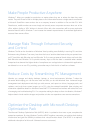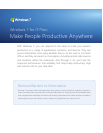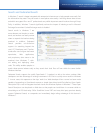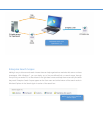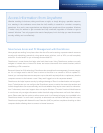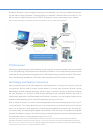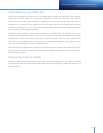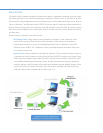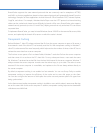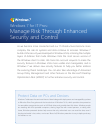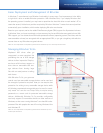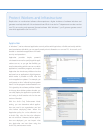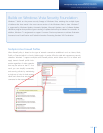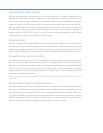
BranchCache
For branch of ces, network bandwidth limitations and latency in application response times can nega-
tively affect productivity. We introduced Background Intelligent Transfer Service in Windows XP and the
Distributed File System Replication service in Windows Server 2008 to help resolve these issues. Branch-
Cache in Windows 7 and Windows Server 2008 R2 is the next step for improving worker productivity in
branch of ces and giving them an experience more like working in the main of ce. By caching content
from remote le and Web servers in the branch location, workers can more quickly access the informa-
tion they need.
BranchCache can operate in one of two modes:
• Distributed Cache. Using a peer-to-peer architecture, Windows 7 client computers cache
copies of les and send them directly to other Windows 7 client computers as necessary.
Improving performance is as easy as enabling BranchCache on your Windows 7 client and
Windows Server 2008 R2 PCs. Distributed Cache is especially bene cial for branch of ces that
do not have a local server.
• Hosted Cache. Using a client/server architecture, Windows 7 client computers cache content to
a computer on the local network running Windows Server 2008 R2, known as the Hosted Cache.
Other clients that need the same content retrieve it directly from the Hosted Cache which offers
more reliable availability than Distributed Cache. Hosted Cache does not require a dedicated
machine, making it ideal for branch of ces with server hardware already installed. Hosted Cache
can be con gured on a branch le server, read-only domain controller, ISA server and more,
while the Hosted Cache computer can run the Server Core.
Hosted Cache can be con gured on
existing server hardware within a branch.




